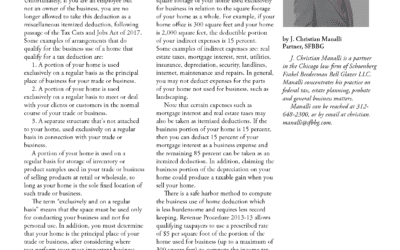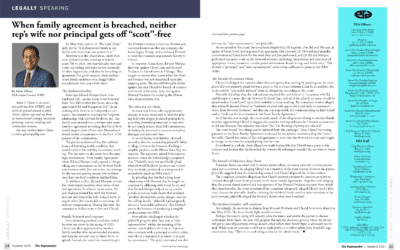Tipping after a meal is a highly individual preference. Some food lovers will leave huge tips even if the soup arrives cold and the beer warm with the waitstaff nowhere to be found, while other customers tip frugally after receiving five-star service at a busy restaurant.
Certain tipping norms have emerged nationwide, however, even in New York City. “Assuming that the diner is not a scrooge and the service was not atrocious,” according to U.S. District Judge J. Paul Oetken of the Southern District of New York, “a typical New Yorker tips between 15 and 25 percent.”
Rather than entrust this decision to the discretion of finicky diners, the owners of two Applebee’s restaurants in Manhattan sought to automate the process.
At the chain’s Broadway or Times Square locations, meals could be ordered via table-top computer tablets. Payment is made after the meals through the same tablets.
Litigation erupted when diners using these tablets discovered after their meals that the tipping decision had been rendered mandatory.
Regardless of a diner’s level of satisfaction, the tablet flashed “Select your Tip” and offered percentages beginning with 15 percent on Broadway and 18 percent at Times Square.
Should a customer enter a percentage less than the minimum, the tablet displayed: “Amount entered is under the minimum service charge.” Applebee’s offered no option to avoid tipping or to enter an amount lower than the self-proclaimed minimum service charge.
Two patrons of these midtown establishments brought a complaint in federal court in Manhattan seeking class-action status. They allege the Applebee’s franchises deceive their customers with misleading menu prices that do not disclose the mandatory tipping.
The complaint also asserts the franchisees mislead customers by their tablets referring to the end-of-meal charge as a “tip,” when it is actually a mandatory surcharge.
The franchisees moved for judgment on the pleadings and argued the tipping structure was adequately disclosed to diners. The Applebee’s menus contained a disclaimer noting that prices did “not include beverages, dessert, taxes or gratuity.”
Oetken quickly rejected this argument. “It is one thing to disclose that prices do not include tips. It is quite another to disclose that prices do not include tips and that there will be a mandatory tip when the check arrives” (emphasis in original). Ghee v. Apple-Metro Inc., et al., No. 17-CV-5723 (S.D.N.Y. Jan. 26, 2018).
The court even noted that following Applebee’s logic, the restaurants could serve mandatory ice cream sundaes because their menus disclosed that the meal price did not include dessert.
Applebee’s also sought to defend the tipping approach utilized on its computer tablets with social mores. Customers expect a bill to include a tip, it urged in its brief, because “paying a gratuity on top of a bill for food and beverage is well-accepted custom.” When customers expect to tip their servers, the argument goes, mandatory tipping is not deceitful.
The court did not see it that way. While tipping may well be viewed as part of the total cost of dining out, “the social norm is that tips are expected but subject to the customer’s discretion.” Customers reserve the right to lower a tip beneath a 15 percent or 18 percent threshold if service is poor.
An old server’s adage holds that “If you can’t afford to tip, you can’t afford to eat out,” but the law doesn’t enforce old adages. Thus, Oetken ruled that forcing customers to leave an undisclosed, respectable gratuity of at least 15 percent or 18 percent can be actionable.
The judge viewed Applebee’s strongest argument to be that because customers would likely leave a tip of 15 percent to 18 percent regardless of the computer tablets’ minimums, plaintiffs cannot allege they were harmed by the restaurant policies.
He, therefore, took a careful look at the claim asserted under New York’s consumer protection statute, and the specific harm alleged.
Plaintiffs’ allegations raised three potential categories of harm. First, the cost of the entire meal, together with the entire tip, could be claimed as damages by customers asserting they had never dined at the restaurant were the mandatory tipping policy was disclosed up-front.
Second, the entire tip could be claimed as damages on the grounds that it was procured by deceitfully imposing minimums.
And the third category of potential harm is the difference between the tip actually paid and the amount a diner would have paid had the restaurants’ tablets enabled free choice.
The court’s determination was the first two categories of potential harm are not recoverable because the New York statute only applies to the amount a consumer overpaid, not the actual amount paid. The court also found that plaintiffs did not allege the menu prices were inflated, so the cost of the entire meal cost was not at issue.
A different story was presented with the third damages category. Those consumers who would have tipped less than the minimum permitted by the tablets stated a claim for relief under the New York consumer fraud statute.
Class members who would tip less than 15 percent or 18 percent were recognized as having a claim under the statute for the difference between what they actually tipped and the amount, if any, they would have tipped — left to their own devices.
As this Applebee’s franchisees learned, diners who tip below customary levels are like patrons who chew with their mouths open or speak loudly enough to be heard at the next table.
They should be educated or perhaps cultured, but not forced to correct their behavior Big Brother style, lest resort be made to the court system.
To view this article as it appears in the Chicago Daily Law Bulletin, click here.



